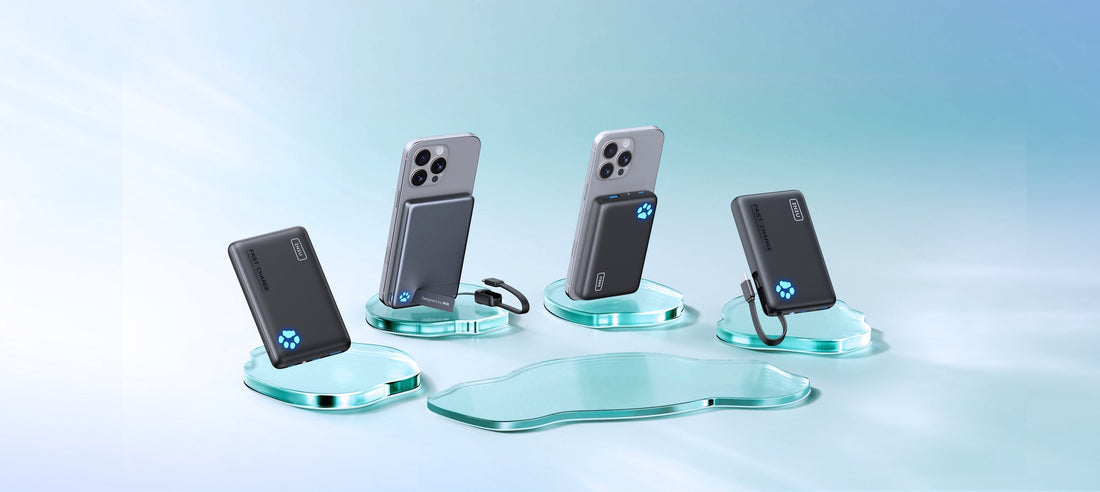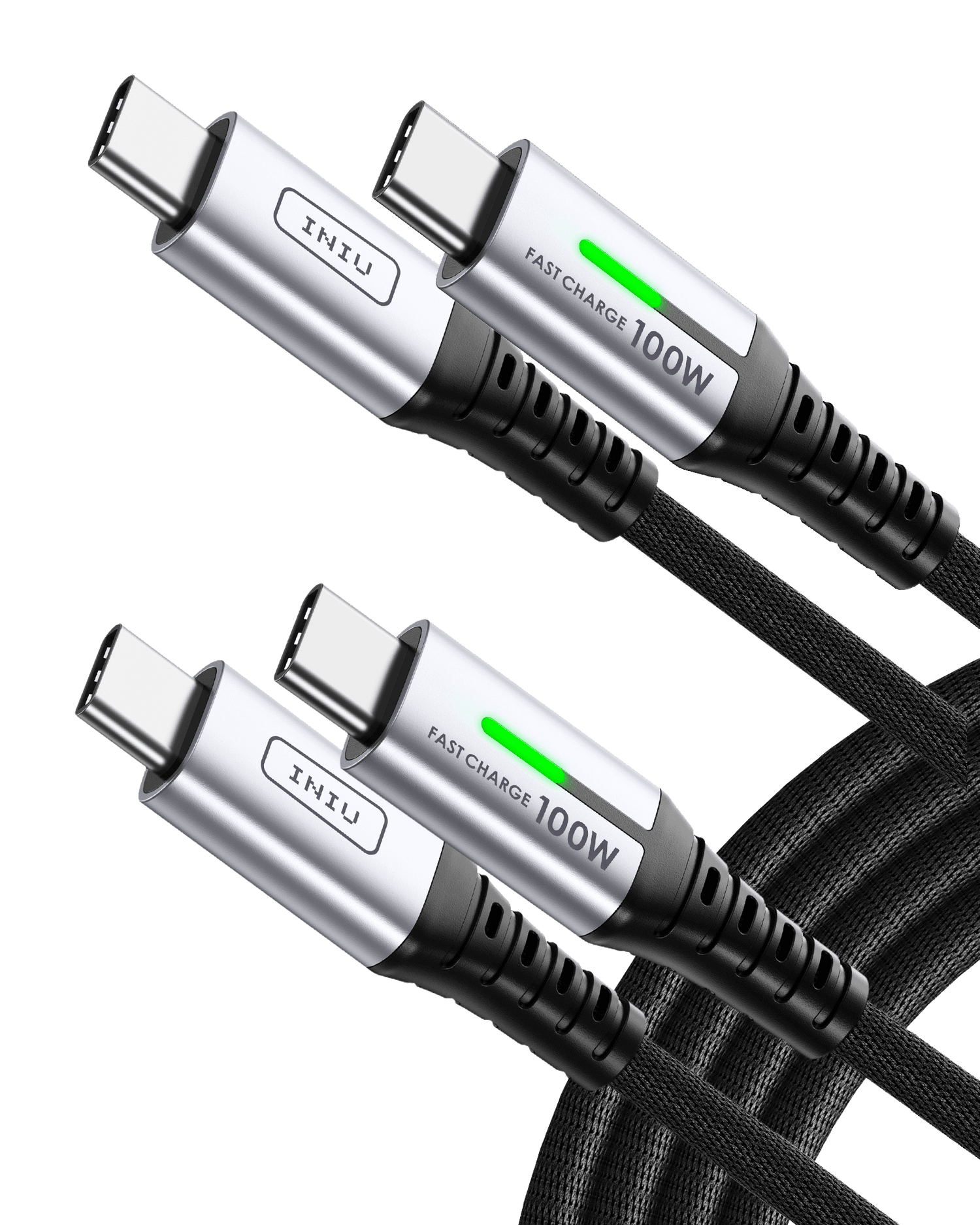
How to Choose the Perfect Slim Magnetic Portable Charger
A reliable magnetic portable charger isn't just a convenience—it's a necessity. Whether you're a commuter, traveler, or someone who just hates being tethered to a wall socket, having a thin portable charger with magnetic wireless charging can dramatically improve your mobile experience.
But with so many models on the market—how do you choose the right one? This guide breaks down the technology, purchasing factors, and real-world pros and cons, giving you a better understanding of how to choose a slim magnetic portable charger.
How Magnetic Portable Chargers Work

A magnetic wireless power bank uses a ring of precisely placed magnets to snap your phone into the optimal charging position. This ensures coil-to-coil alignment, which is crucial for minimizing energy loss and heat buildup. The following are various mainstream new wireless charging technology standards:
MagSafe: Apple's proprietary magnetic alignment system for iPhones (12 series and later), supporting up to 15 W wireless charging.
Qi2: An open magnetic charging standard from the Wireless Power Consortium, designed for both iOS and Android. Like MagSafe, Qi2 uses magnetic alignment to keep the phone perfectly positioned, delivering up to 15 W wireless charging.
Qi2.2 (latest, builds on Qi2):
Higher power: Up to 25 W wireless charging on compatible devices.
Better thermal management: Improved heat dissipation—especially important for slimmest portable chargers with limited cooling space.
Adaptive charging curves: Real-time power adjustments based on battery temperature and health.
Broader compatibility: Works seamlessly with a growing range of Android devices, laptops, and accessories.
Without magnetic alignment, misaligned coils can cause up to 30% charging efficiency loss. Qi2 and Qi2.2 not only solve this problem but also make charging faster and cooler—key for maintaining battery health in the long run.
According to news, Apple's upcoming iPhone 17 series, set to launch in September 2025, will be the first smartphone series to support Qi 2.2 wireless fast charging, potentially sparking a trend toward Qi 2.2 wireless charging.
Key Factors to Consider When Buying a Magnetic Portable Charger
1. Capacity vs Portability
5,000 mAh: Ideal for everyday carry—enough to charge most smartphones once, while keeping the form factor extremely thin. Perfect for pocket carry.
10,000 mAh: A balance between capacity and portability—great for day trips.
20,000 mAh+: For extended travel or charging multiple devices, but bulkier.
The slimmest wireless portable chargers usually fall in the 5,000–10,000 mAh range, making them the best balance between function and portability. INIU P73-E1 magnetic portable charger has 10000mAh capacity with only 0.5in thickness, which balances large capacity and convenient portability.
2. Size, Weight & Comfort
A thin, lightweight portable charger is easier to hold while using your phone, especially when traveling, making calls, or playing games. A slim wireless portable charger attaches to the back of your phone, allowing you to easily use the screen while charging. Its ultra-slim design also makes it easy to carry when you are out.
Some magnetic portable chargers even have built-in stands, making them easier to charge your device while attending online meetings, watching videos, and more.
3. Charging Standards & Compatibility
iPhone 12+ series: Look for MagSafe or Qi2-certified models for 15W fast wireless charging. Rumor has it that Apple's upcoming iPhone 17 series will support Qi2.2 wireless charging, with a maximum wireless charging speed of up to 25W. If you are interested in Apple's new iPhone 17 series products (iPhone 17, iPhone 17 Air, iPhone 17 Pro, etc.), you may consider paying attention to the new Qi2.2 wireless charging products, which will gradually be available in the near future.
Android: Newer Qi2-ready flagships can use Qi2 to get faster wireless speeds. Some models can achieve magnetic wireless charging through third-party mobile phone case accessories with magnetic rings.
4. Charging Speed & Efficiency
Wireless: Qi2/MagSafe—up to 15 W; Qi2.2—up to 25 W.
Wired: Look for USB-C PD output (20 W or higher for smartphones; 65 W+ for laptops).
A slim magnetic power bank that supports both wireless and wired charging can provide you with maximum convenience, allowing you to easily switch between charging methods based on your devices.
5. Extra Features That Matter
Some wireless portable power banks have also made new attempts to improve the user charging experience by providing better support through additional features.
- Built-in stand for hands-free viewing.
- Pass-through charging (charge your phone while the power bank is being charged).
- Premium cooling design for high-speed wireless charging.
Top Use Cases for a Portable Magnetic Charger

On-the-go professionals
For people constantly moving between meetings, coworking spaces, and client visits, battery anxiety is a real productivity killer. A magnetic portable charger snaps onto the phone instantly—no fumbling for cables—so you can take calls, check documents, or join a video conference even while walking between buildings or riding in a taxi.
Travelers
Whether you’re navigating airports, sightseeing, or stuck in a cramped airplane seat, a thin portable charger with magnetic attachment eliminates messy cables that tangle with your bag straps or seatbelt. You can keep maps open, play music, or stream content while the charger stays securely attached to the back of your phone, even in turbulence.
Content creators
For vloggers, livestreamers, or mobile photographers, holding a phone connected to a cable can be awkward and can block your shot. A magnetic charger aligns perfectly without shifting, letting you record in portrait or landscape mode while keeping your grip natural. With Qi2’s cooler charging, you can shoot for longer without overheating your device.
Students
In a packed class schedule, power outlets aren’t always available. A slim, lightweight portable charger in your backpack or pocket means you can recharge between lectures, in the library, or while walking across campus—without adding much weight to your daily carry.
Emergency backup
Even if you don’t use it daily, carrying a compact 10,000 mAh magnetic charger can be a lifesaver during unexpected power outages, late-night commutes, or long hospital visits. Magnetic alignment makes it quick to deploy in stressful situations—just snap it on and your phone starts charging instantly.
Best Wireless Portable Chargers in 2025
INIU is committed to upgrading and innovating magnetic charging technology and has launched many excellent magnetic portable chargers. The following are several products worth recommending.
|
Model |
Capacity |
Key Features |
|
INIU SnapGo P73-E1 Magnetic Portable Charger with Stand |
10,000 mAh |
Qi2 15W wireless charging and 45W wired charging, ultra-slim(0.5in), integrated foldable stand, dual USB-C ports |
|
INIU SnapGo P71-E1 Magnetic Charger |
5,000 mAh |
Magnetic alignment, Qi2 15W wireless, ultra-thin profile, built-in foldable stand |
|
INIU Pawsible P43-E1 Magnetic Power Bank |
10,000 mAh |
Qi2 15W wireless, USB-A & USB-C output ports, dog paw indicator light |
Tips to Maximize Your Magnetic Portable Charger's Lifespan
Avoid Excessive Heat Exposure
Prolonged exposure to high temperatures—such as leaving your charger in a hot car or under direct sunlight—can accelerate battery degradation. Whenever possible, keep your charger in a cool, shaded environment to preserve battery health over time.
Keep Magnetic and Charging Surfaces Clean
Dust, lint, or metal debris on the magnetic ring or wireless charging coil can weaken the magnetic connection and reduce charging efficiency. Regularly wipe these surfaces gently with a dry, soft cloth to maintain optimal performance and secure attachment.
Use Certified Charging Accessories
When recharging your power bank, always use manufacturer-recommended or certified USB-C cables and power adapters. Low-quality or incompatible chargers can deliver unstable current, potentially damaging the battery or reducing its lifespan.
Store at Partial Charge for Long-Term Inactivity
If you plan not to use your magnetic charger for several weeks or longer, store it with a battery level around 40–60%. Fully discharging or leaving it at 100% charge for extended periods can stress the battery cells and reduce overall longevity.
FAQ: Real User Questions About Magnetic Portable Chargers
Q: Will a magnetic charger damage my phone battery?
No, as long as you use certified magnetic wireless charger models. Qi2 and Qi2.2 include temperature and voltage regulation to protect battery health.
Q: Can I use a Qi2 charger with a non-Qi2 phone?
Yes, but it will default to the highest standard supported by your phone (e.g., Qi1.3 or regular Qi speeds). You won't get the 15 W advantage unless both charger and device support Qi2.
Q: Do magnets interfere with other phone functions?
In modern designs, magnets are positioned to avoid interference with NFC, cameras, or wireless antennas. Still, keep them away from sensitive items like credit cards with magnetic strips.
Q: What's the difference between MagSafe and Qi2/Qi2.2?
MagSafe is Apple's proprietary version (up to 15W) for iPhones. Qi2 is the universal standard that works on both iOS and Android, also up to 15W. Qi2.2 increases that to 25 W for supported devices and adds better heat management and charging efficiency. Keep an eye on the new iPhone 17 series products unveiled at Apple's September launch event and the wireless charging protocols they support.
Conclusion
Choosing the right magnetic portable charger means balancing capacity, size, and charging standards. For those prioritizing portability, a thin portable charger in the 10,000 mAh range offers the perfect balance. And with the advent of Qi2.2, wireless charging is now faster, cooler, and more device-friendly than ever—making it a genuine replacement for many wired charging situations.



